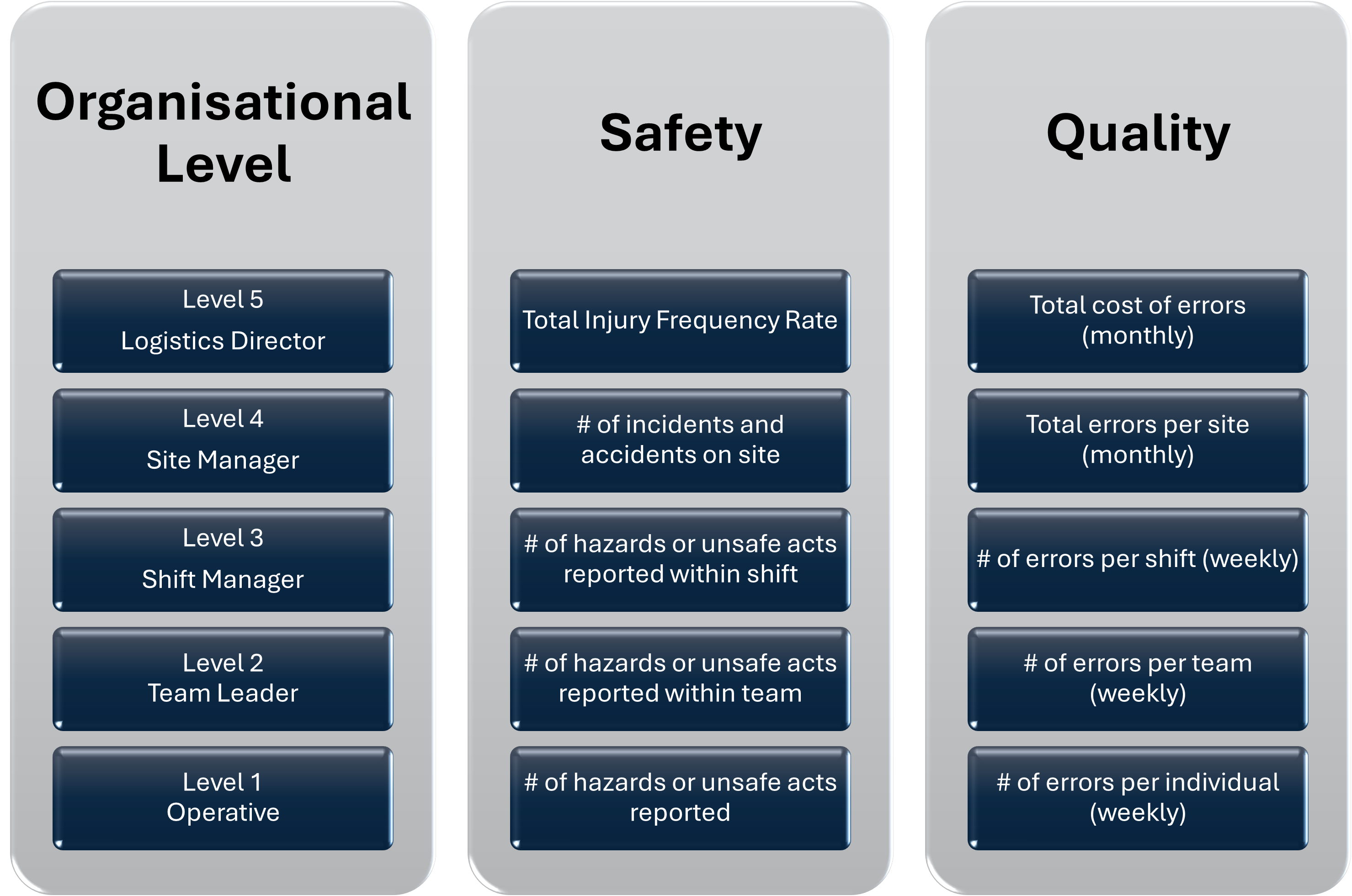Article
KPI Trees: The key to unlocking long-term sustainable performance improvement
KPI trees are a tool that can help you foster alignment, transparency, and focus in your business
In this blog, Liam O’Keeffe and Chris Marrow, consultants at Hatmill, will explain what KPI trees are, how they work, and how they can help operative and frontline logistics colleagues to achieve corporate KPIs.
Why do KPIs fail?
Many organisations use KPIs to measure business performance, but very rarely do they work well beyond General/Site Manager level. In most cases, it is because they are not made relevant to all the levels of the organisation. If an individual does not understand their role in achieving corporate-level KPIs or feel empowered to influence them, a cultural dichotomy emerges, where management obsesses over metrics, whilst everyone else tries their best to keep up.
KPI performance can be defined as “the sum-total of an organisation’s effort to achieve an objective”, the key here is “sum-total”. Imagine a world where your entire business is actively working to achieve company KPIs instead of just the ~20% that are management. What impact would this have on your customers and colleagues?
What is a KPI tree and how can they be beneficial?
A simple tool to make KPIs relevant to all levels is a “KPI Tree”. A KPI tree defines relevant KPIs for each level of the organisation, ensuring everyone has clearly defined objectives that they can influence which contribute collectively to KPI achievement. The top of the tree should start with the business goals then work through the organisation showing the link to site goals, department goals and team goals. An organisation should allow time for engaging at all levels on what the business goals are, how they support the delivery of the business vision and strategy.
A KPI tree provides:
Clarity: identifying what KPIs an individual can influence, defining what they measure and how frequently they should be measured
Hierarchy: With the most important KPIs at the top of the KPI tree, other KPIs cascade down to each organisational level defining responsibility for all individuals
Engagement and empowerment: All individuals and levels of the organisation have achievable KPIs that they can influence
An example of how KPIs can be made relevant across all of the organisation can be found below.

When every level of your organisation understands their KPIs, you might hear responses like, “I contribute by picking 20 orders per hour, double-checking my work to ensure accuracy, and maintaining a clean environment to minimise accident risks for myself and my colleagues.” At this stage, you can be confident that you have unlocked the full productive potential of your organisation
If you would like to leverage the full productive force of your logistics function (or entire organisation) reach out to Liam O’Keeffe or Chris Marrow to discuss how we can help.
Ideas & Insights
Sharing Our Expertise
Our guides, ideas and views. Explore our insights to deliver tangible improvements to your supply chain and logistics operations.

